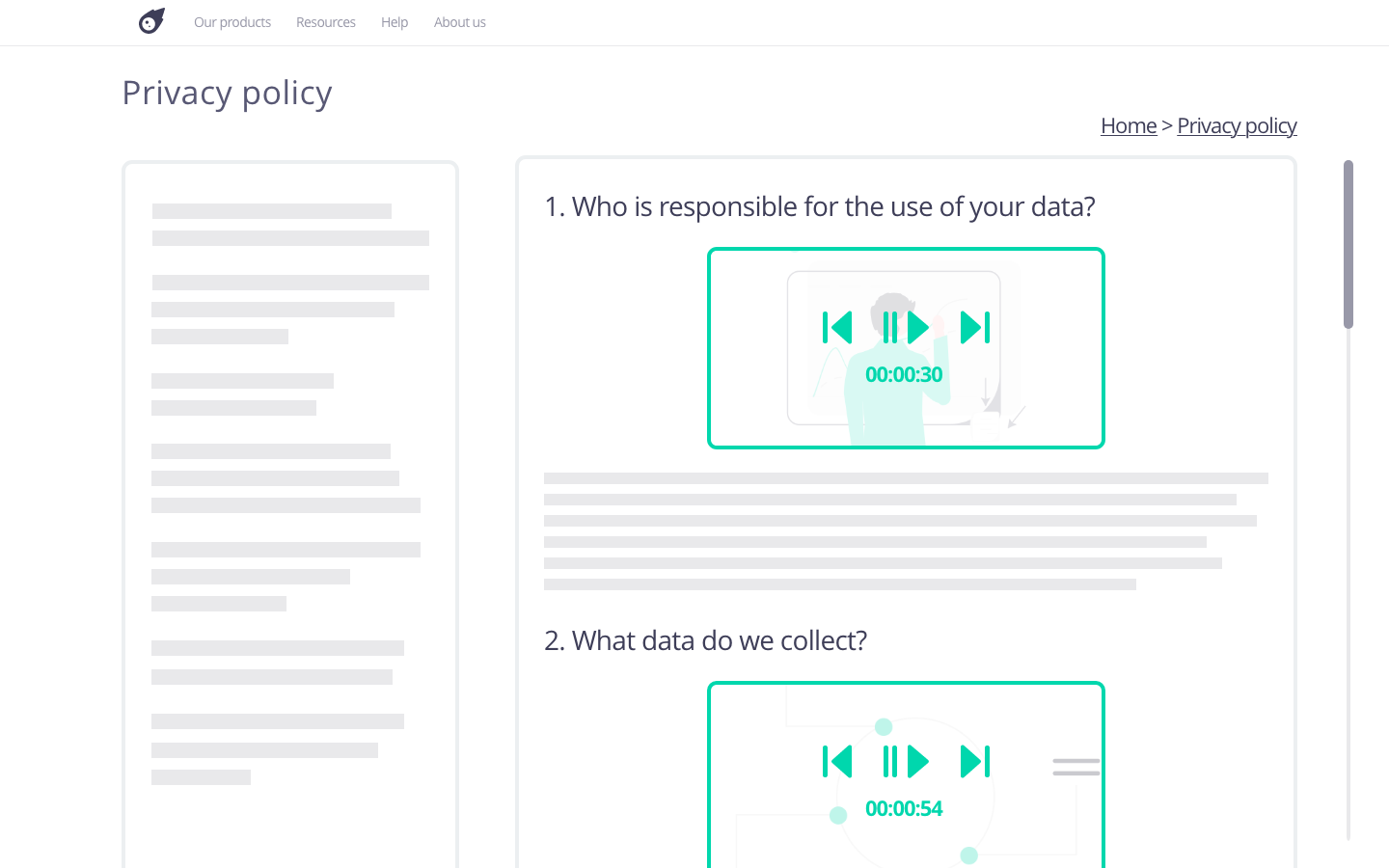This design pattern is part of the LINC’s research initiative focusing on interface design. It comes from frequent proposals made by participants of the Data & Design workshops to implement the principle of transparency provided in the GDPR. It can be used and adapted to the specific context of your services and products. However, its reuse as such do not guarantee compliance with the GDPR in general and the principle of transparency in particular.
Videos are a way to inform people about the processing of their personal data in a dynamic, engaging and synthetic way. They capture people’s attention to deliver information effectively. It is a mode of information that is particularly well suited to young audiences or those with reading difficulties.
Using the pattern in the user journey
► When signing-up : this pattern can be integrated in a relevant way into a registration process, especially if an onboarding process is set up, in order to explain the key points of the processing and the way to control your data. Short and dynamic formats arepreferable in order to ensure that the information is seen. The video thus acts as a first level of information and invites to visit a second one, accessible in one click from the video itself or from the page on which it is displayed.
► In a privacy policy : this pattern can act as a summary of the policy or its sections. Videos help to simplify the information provided by illustrating what is being said, particularly by using pictorial examples. It can be used in addition to text to make the information more attractive, quick to read and clear. However, the information expected by the GDPR should not be contained solely in this format.
► In case of a problem with the data or its use : the video format makes it possible to integrate explanatory tutorials to answer frequently asked questions found, for example, in an FAQ. These tutorials can thus show step by step how to solve a situation. This format can be particularly valuable for people who are not comfortable with text and prefer visual and auditory explanations, which make it easier for them.
Tips
► A video can hardly replace written content, and it should be considered as a complementary means of information.
► The integration on your site of videos hosted by a third party service may raise questions relating to the GDPR or the Data protection offences, particularly when this integration involves the deposit of tracers such as cookies. It is therefore necessary to check the technical specifications of the host and, if required, to inform and obtain the consent of the person before playing the video.
► This pattern must be designed to be accessible to everyone so that all people are equally informed about the processing of their data. One should be carefull to make these videos accessible with subtitles and an audio description supported by the video player. A full transcript can also be made available, either directly in the player or below the video.
► Videos can become less effective if they are too long. There is a risk that people will not watch the whole video, thus losing some of the information. Alternatively, a long video can be devided into chapters to make it easier to navigate through its lenght.
► Some information are more relevantly explained without a video. It is therefore only appropriate to include one if it really adds value.
Examples
Possible Approach





